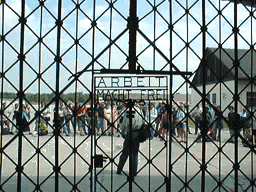Auschwitz, Belsen, Dachau. Three generations later, these names still evoke the horrors of Nazi Germany around the world. What should be done with sites where hundreds of thousands of people were murdered and cremated? Punish Nazis? Tear down the buildings and plant trees? Build stores and apartments? Educate teenagers? All of these things happened at former concentration camps after 1945.
Marcuse's insightful narrative takes one of these sites, Dachau, and traces its history from the beginning of the twentieth century, through its twelve years as Nazi Germany's premier concentration camp, to the camp's postwar uses as a prison, residential neighborhood, and, finally, museum and memorial site.
With superbly chosen examples and an eye for telling detail, this absorbing book documents how Nazi perpetrators were quietly rehabilitated to become powerful elites, while survivors of the concentration camps were once again marginalized, criminalized, and silenced. The early postwar dodge "We didn't know!" became "We don't want to know," and German officials first rebuilt the camp as a huge housing project, then attempted to bulldoze it and the crematorium into oblivion. However, by 1965 camp survivors were able to ensure the preservation of some remains as a memorial site.
Always situating Dachau within the broader context of German history, Marcuse reveals the underlying dynamic of German memory debates from the 1968 rebellion to the "Holocaust" mini series in the 1970s, to Bitburg in the 1980s, to the Goldhagen and Berlin "murdered Jews" memorial controversies of the 1990s.
Combining meticulous archival research with an encyclopedic knowledge of the extensive literatures on Germany, the Holocaust, and historical memory, Legacies of Dachau unravels the intriguing relationship between historical events, individual memory, and political culture, enabling it to offer the first unifying interpretation of their interaction over the entire sweep of German history from the Nazi era into the twenty-first century.
 The
jacket illustration shows tourists listening to a guide inside the Dachau
entrance gate with its inscription "Arbeit macht frei" ("Work makes free"). Photo
by the author, 1997.
The
jacket illustration shows tourists listening to a guide inside the Dachau
entrance gate with its inscription "Arbeit macht frei" ("Work makes free"). Photo
by the author, 1997.